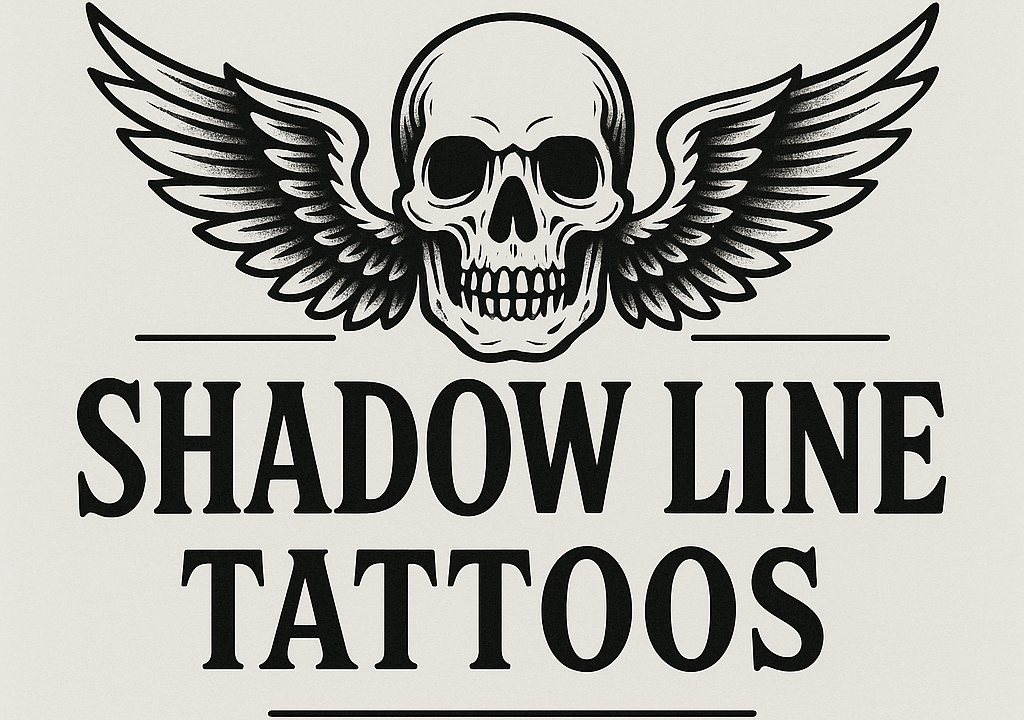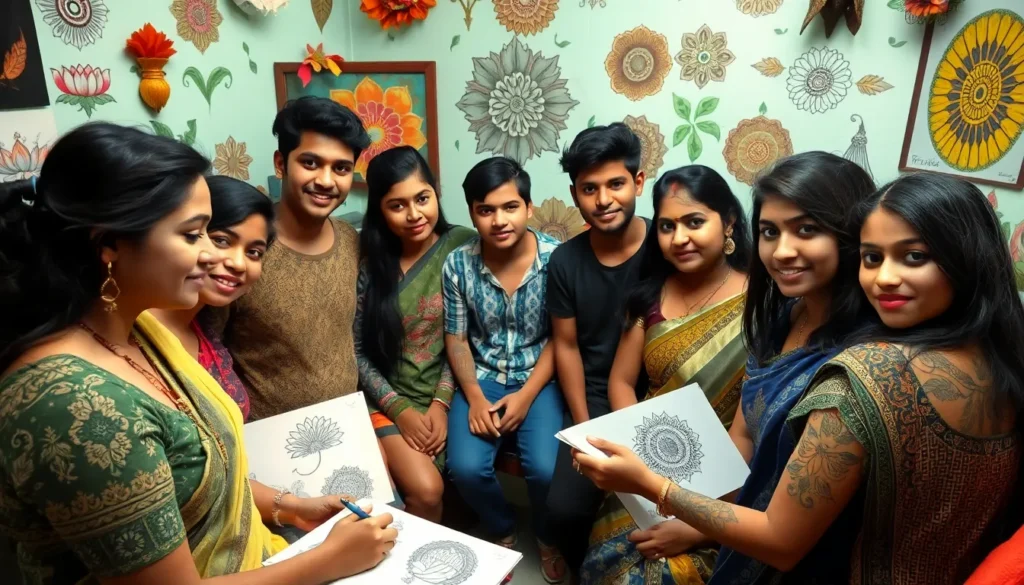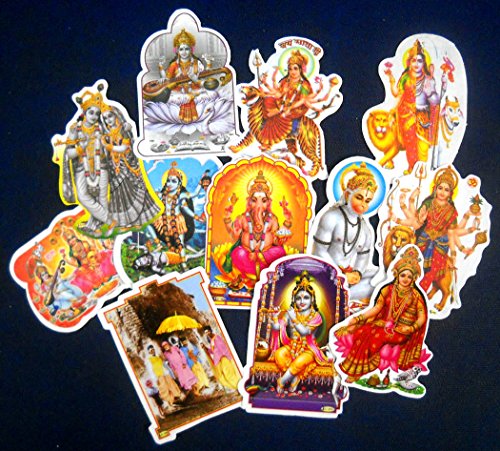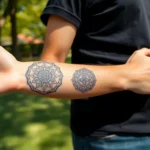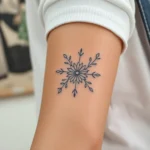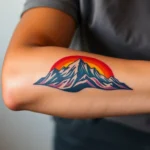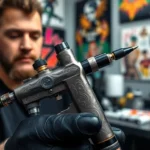India’s rich cultural tapestry offers endless inspiration for stunning tattoo designs that tell powerful stories. From ancient Sanskrit symbols to intricate henna patterns we’ve adapted these timeless motifs into modern body art that resonates with people worldwide. Whether you’re drawn to spiritual mantras or geometric mandalas Indian tattoo ideas blend deep meaning with breathtaking visual appeal.
We’re seeing more people embrace these designs not just for their beauty but for their profound symbolism. Each element carries centuries of tradition – from lotus flowers representing purity to Om symbols channeling universal energy. These aren’t just tattoos they’re personal statements that connect you to one of the industry’s most spiritually rich cultures.
The versatility of Indian-inspired designs means there’s something perfect for everyone. Whether you prefer bold tribal patterns or delicate paisley details we’ll explore options that suit every style and placement preference.
Traditional Indian Symbols and Their Meanings
Sacred symbols from India’s spiritual traditions offer profound meanings that translate beautifully into tattoo art. These ancient emblems carry centuries of cultural significance and provide powerful personal statements through body art.
Om Symbol Tattoos
Om represents the universal sound of creation and stands as Hinduism’s most sacred symbol. We see this primordial vibration depicted in various artistic styles, from simple black ink designs to ornate colorful interpretations featuring decorative flourishes. Placement options include the wrist, behind the ear, or center chest where the symbol’s spiritual energy can resonate most powerfully. Artists often incorporate Sanskrit script around the Om symbol, adding mantras like “Om Namah Shivaya” or “Om Mani Padme Hum” to enhance the tattoo’s spiritual depth. Size flexibility makes Om tattoos suitable for both minimalist approaches and larger statement pieces that incorporate surrounding elements like lotus petals or geometric patterns.
Lotus Flower Designs
Lotus flowers symbolize purity, rebirth, and spiritual awakening as they emerge beautiful and clean from muddy waters. We find these designs particularly meaningful because they represent personal transformation and the ability to rise above life’s challenges. Color variations carry different spiritual meanings with white lotus representing mental purity, pink symbolizing the Buddha, red indicating love and compassion, and blue representing wisdom and knowledge. Popular placement areas include the shoulder blade, forearm, or ankle where the flower’s natural curves complement body contours. Artists frequently combine lotus designs with other Indian elements such as Om symbols, Sanskrit quotes, or mandala backgrounds to create comprehensive spiritual tattoos that tell complete stories of personal growth.
Mandala Patterns
Mandala means “circle” in Sanskrit and represents the universe, wholeness, and cosmic energy in Hindu and Buddhist traditions. We appreciate how these geometric patterns create mesmerizing visual effects through their intricate symmetrical designs featuring repeating shapes, dots, and flowing lines. Circular mandalas work exceptionally well on areas like the upper back, chest, or thigh where there’s adequate space for detailed artwork to unfold properly. Customization options include personal elements such as birth flowers, zodiac symbols, or meaningful dates integrated into the mandala’s geometric framework. Therapeutic benefits emerge from mandala tattoos as many people find the symmetrical patterns calming and meditative, making them popular choices for those seeking both artistic beauty and spiritual grounding in their body art.
Hindu Deity Tattoo Inspirations
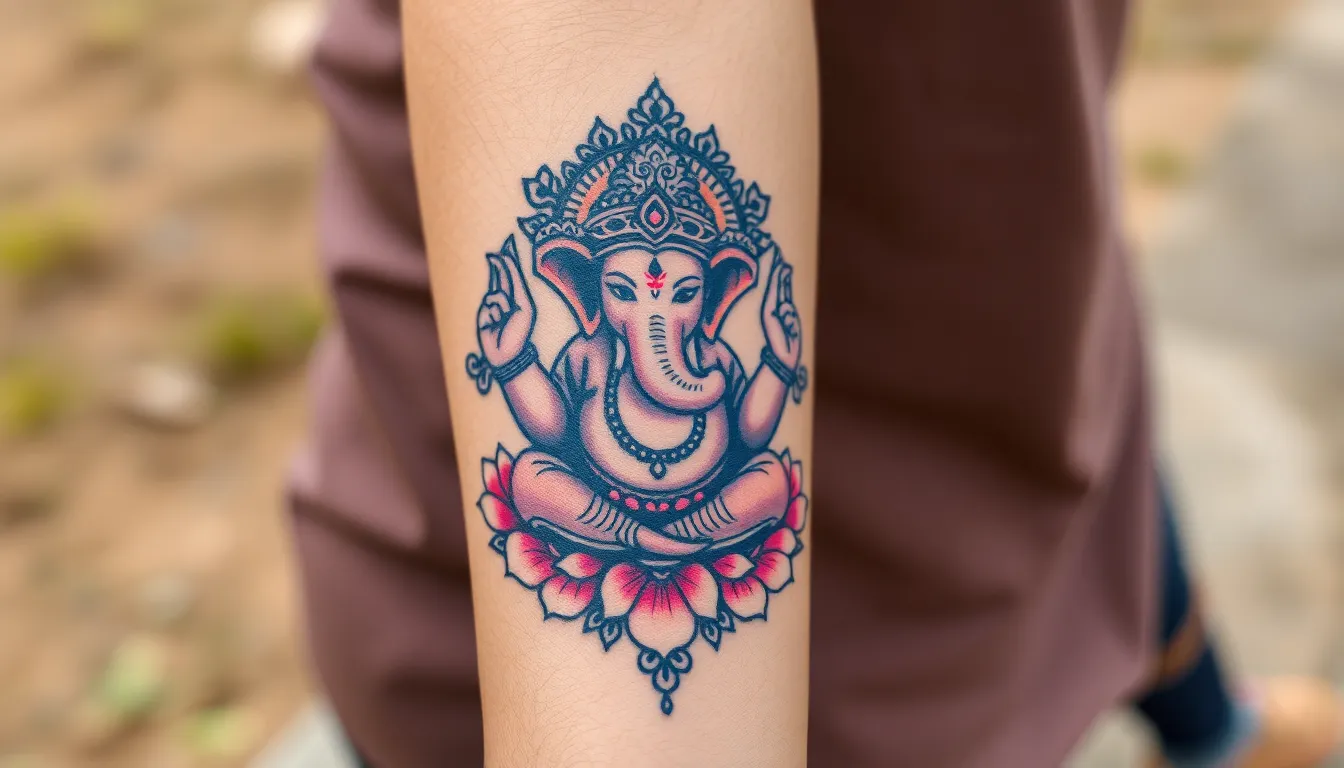
Hindu mythology provides an endless source of powerful imagery that transforms traditional spiritual symbols into contemporary body art. We’ll explore the most revered deities that inspire meaningful tattoo designs representing wisdom, protection, and divine energy.
Ganesha Tattoo Designs
Ganesha tattoos serve as powerful symbols of new beginnings and the removal of life’s obstacles. We often see these designs incorporating the elephant-headed deity’s multiple arms holding symbolic items like lotus flowers, sweets, and the sacred trident. Popular placement options include the forearm, back, and upper arm where intricate details can shine.
Design variations range from minimalist outlines to elaborate portraits featuring mandala patterns and watercolor effects. We recommend adding Ganesha’s loyal mouse companion Mushika to represent the control of desires and earthly attachments. Many clients choose to incorporate the Om symbol alongside their Ganesha tattoo for enhanced spiritual depth and meaning.
Shiva and Shakti Representations
Shiva tattoos capture the essence of the destroyer of evil through iconic elements like the third eye, crescent moon, and powerful trident known as the Trishul. We see these designs emphasizing Shiva’s role as the god of meditation and cosmic transformation. Artists often depict him in deep contemplation or performing the cosmic dance that maintains universal balance.
Shakti representations celebrate divine feminine energy through powerful goddesses like Durga and Parvati wielding multiple weapons while riding their lion mounts. We find these tattoos particularly meaningful for those seeking to honor creativity and inner strength. Combined Shiva and Shakti designs create stunning visual narratives about cosmic balance and the unity of masculine and feminine energies.
Krishna and Radha Imagery
Krishna tattoos frequently showcase the beloved deity playing his enchanting flute surrounded by vibrant peacock feathers that symbolize joy and divine playfulness. We love how these designs capture Krishna’s blue skin tone and pastoral settings that reflect his earthly adventures. Scenes from Krishna’s life offer endless inspiration for storytelling through body art.
Radha appears in many designs as the embodiment of devotion and unconditional love, often depicted beside Krishna in romantic pastoral scenes. We see couples choosing matching Krishna and Radha tattoos to represent their spiritual connection and commitment. Tree motifs commonly frame these divine lovers, creating beautiful compositions that blend romance with deep spiritual significance.
Sacred Sanskrit Text Tattoos
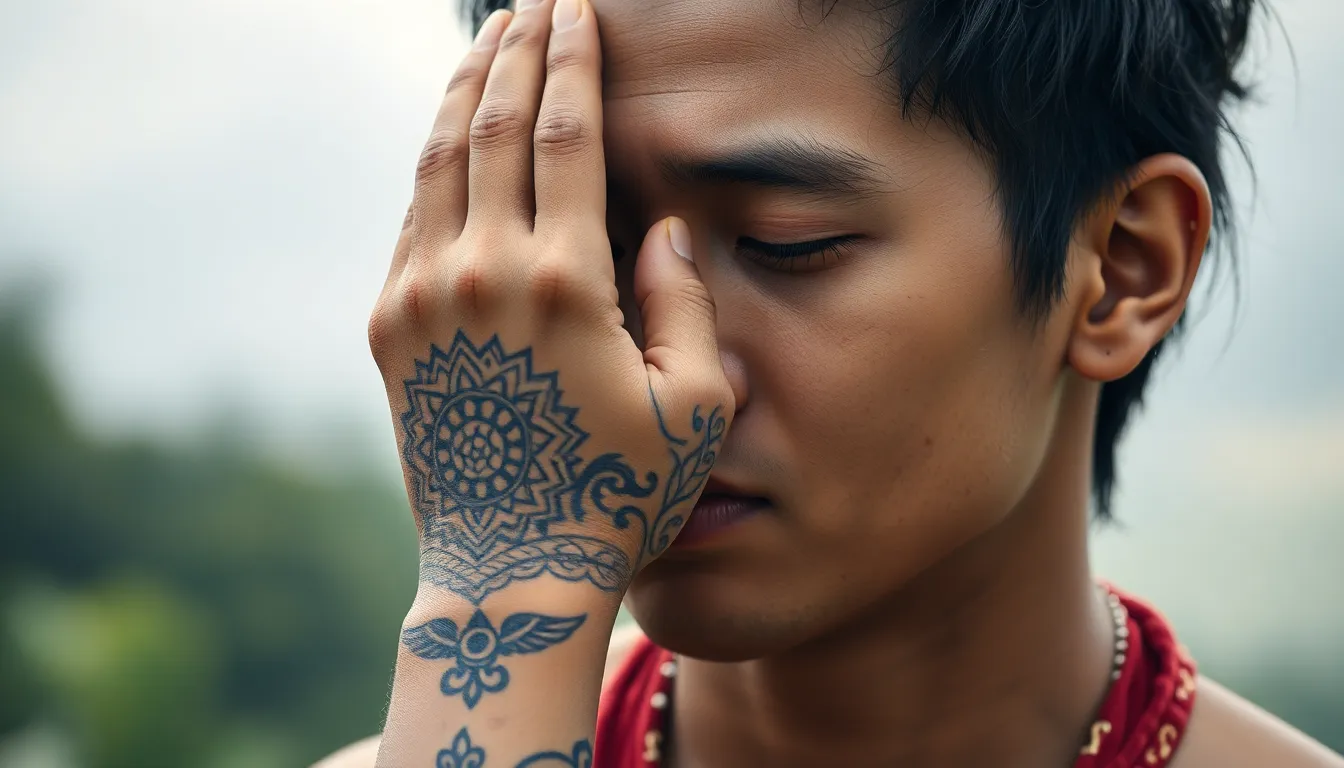
Sanskrit texts offer profound spiritual depth for tattoo enthusiasts seeking meaningful body art. These ancient inscriptions connect us to thousands of years of wisdom and spiritual practice.
Mantras and Prayers
Gayatri Mantra tattoos represent one of the most revered choices from the Rig Veda, symbolizing spiritual growth and divine guidance in our daily lives. We often see these tattoos combined with lotus flowers or sun symbols to enhance their sacred meaning.
Maha Mrityunjaya Mantra designs incorporate the Om symbol and Trishul, creating powerful protection against negative energies and death itself. Artists frequently place these mantras along the spine or across the chest for maximum spiritual impact.
Aham Brahmasmi inscriptions translate to “I am Brahman,” signifying our unity with the supreme reality in Hindu philosophy. These tattoos serve as daily reminders of our connection to the divine consciousness.
Inspirational Quotes in Sanskrit
Asha tattoos mean “hope” and provide constant encouragement during challenging times in our lives. We recommend placing these delicate script tattoos on the wrist or behind the ear for subtle daily inspiration.
Maa designs honor mothers through Sanskrit script, symbolizing unconditional love and the unbreakable maternal bond we share. These tattoos often feature flowing calligraphy that wraps around the arm or decorates the shoulder blade.
Satya inscriptions represent “truth” and remind us to live authentically in all our relationships and endeavors. Artists typically render these in bold Sanskrit characters across the forearm or collarbone.
Personal Name Translations
Individual name tattoos in Sanskrit allow us to connect deeply with our heritage while expressing personal identity through ancient script. We can transform any name into beautiful Devanagari characters that carry both personal and spiritual significance.
Family name combinations create meaningful tattoos that honor multiple loved ones through elegant Sanskrit translations. These designs work particularly well as matching tattoos or larger pieces that incorporate decorative elements like lotus petals or geometric borders.
Birth name restorations help us reclaim our cultural identity by displaying our given names in their traditional Sanskrit form. We often pair these with birth dates in Sanskrit numerals for a complete personal tribute.
Henna-Inspired Tattoo Patterns
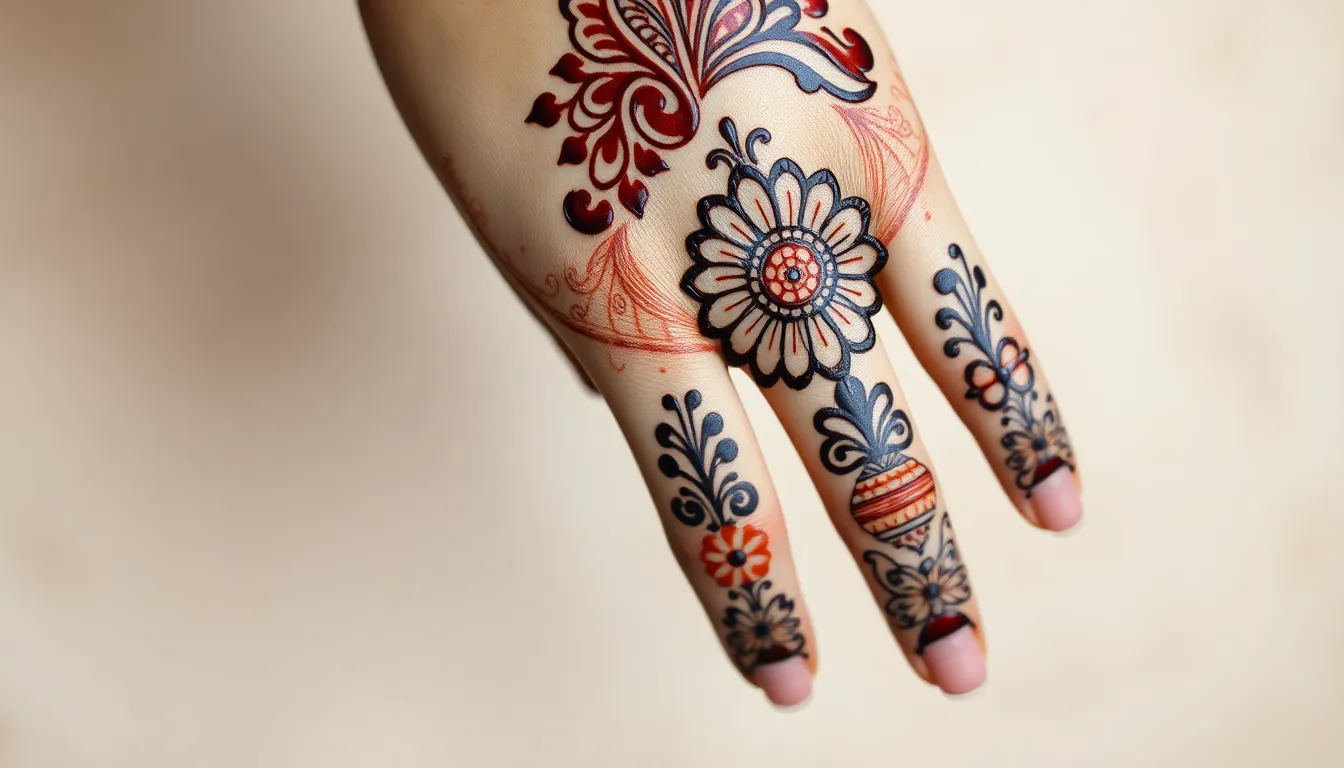
Henna patterns offer timeless elegance that translates beautifully into permanent tattoo designs. We’ve seen these traditional art forms evolve from temporary celebrations into stunning body art that captures the essence of Indian culture.
Intricate Mehndi Designs
Mehndi designs showcase elaborate patterns that feature delicate floral elements, graceful leaves, and mesmerizing geometric shapes. Traditional Indian and Middle Eastern cultures have celebrated these intricate details for generations, especially during special occasions like weddings. We often find these designs incorporating roses, vines, and paisley motifs that create stunning visual narratives on the skin.
Artists frequently adapt these complex patterns by scaling them to fit various body parts like forearms, shoulders, or ankles. Delicate linework becomes the foundation for these tattoos, with fine details that mirror the precision of traditional henna application. Pinterest platforms showcase thousands of mehndi variations that demonstrate how these temporary designs can inspire permanent body art.
Contemporary tattoo artists blend traditional mehndi elements with modern techniques to create unique hybrid designs. Fine line work and dotwork techniques perfectly capture the essence of these intricate patterns while ensuring long lasting clarity.
Bridal Henna Motifs
Bridal henna motifs represent the pinnacle of traditional design complexity, featuring elaborate flowers, intertwining vines, and symbolic elements that celebrate good fortune and happiness. These ceremonial patterns traditionally adorn brides’ hands and feet before their wedding day, creating meaningful connections to cultural heritage. We observe that these designs often incorporate hearts, wedding symbols, and prosperity motifs that tell romantic stories.
Popular bridal elements include mandala centers surrounded by floral borders, creating balanced compositions perfect for larger tattoo placements. Vine patterns that wrap around wrists or fingers echo the traditional application methods while adapting to permanent tattoo formats. Stock photo websites feature extensive collections of bridal henna patterns that showcase the rich symbolism embedded in each design element.
Modern interpretations of bridal motifs often focus on exact symbolic elements like lotus petals, peacock feathers, or traditional wedding symbols. These selective adaptations allow for more minimalist approaches while maintaining cultural significance and visual impact.
Geometric Henna Patterns
Geometric patterns in henna art use precise shapes including triangles, squares, circles, and diamond formations that hold deep significance in Indian artistic traditions. These mathematical elements combine with floral motifs to create balanced compositions that represent harmony between nature and structure. We find that geometric henna patterns offer excellent foundation work for tattoo designs that require clean lines and symmetrical balance.
Traditional geometric elements include repeating diamond chains, interlocking circles, and triangular formations that create optical illusions and visual depth. Artists often use these patterns as borders or focal points within larger design compositions, providing structure to more organic elements. Sacred geometry principles guide many of these patterns, connecting wearers to ancient mathematical concepts and spiritual symbolism.
Contemporary geometric henna tattoos frequently incorporate dotwork and linework techniques that emphasize precision and clarity. These patterns work exceptionally well for sleeve designs, chest pieces, or back tattoos where larger canvases allow for complete pattern development and intricate detail work.
Indian Wildlife and Nature Tattoos
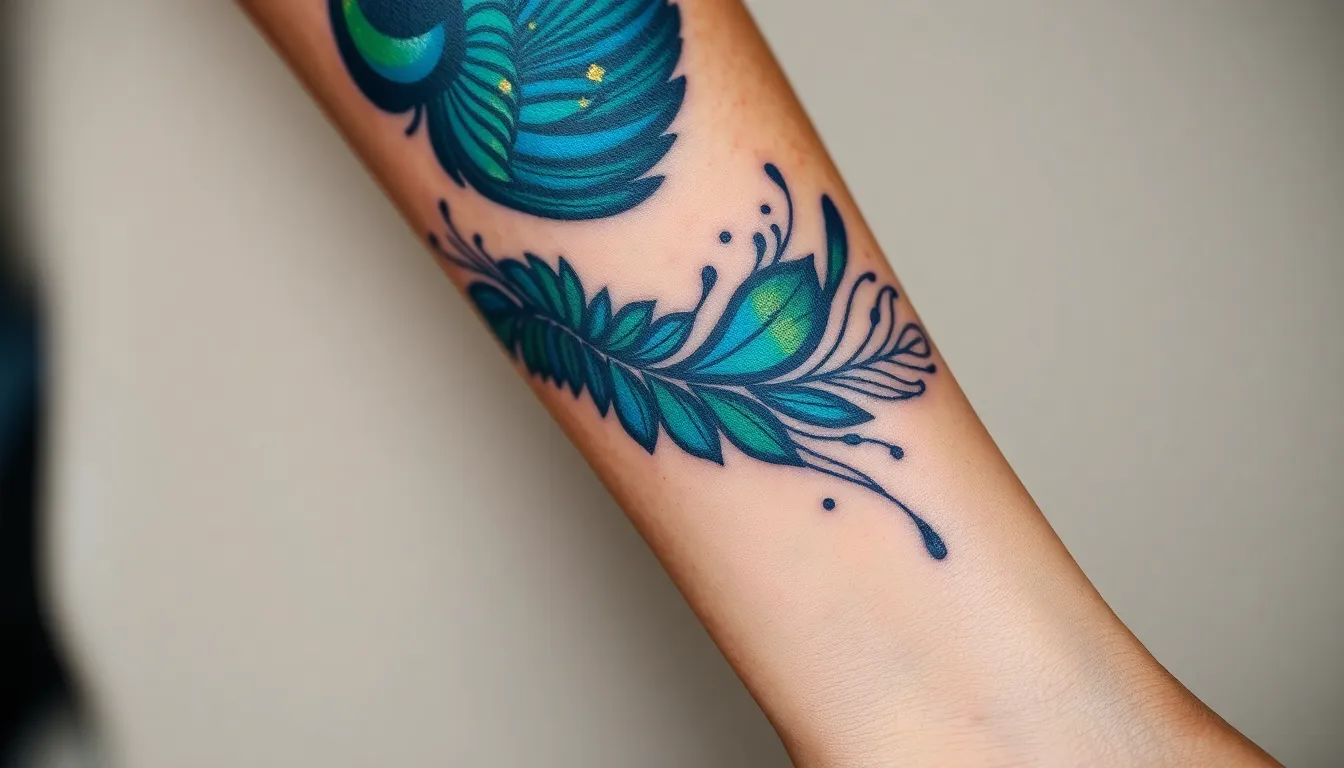
Nature’s bounty provides endless inspiration for Indian tattoo designs that celebrate the country’s rich biodiversity. These tattoos connect us to the natural industry while honoring traditional symbolism.
Peacock Feather Designs
Peacock feather tattoos represent beauty and grace in Indian culture, making them perfect for those seeking elegant body art. These designs often feature intricate and colorful patterns that reflect the vibrant plumage of India’s national bird. Spiritual significance flows through every feather detail, as peacocks symbolize pride, good luck, and divine protection in Hindu traditions.
Artists create stunning peacock feather tattoos using bold blues, emerald greens, and golden accents that capture the bird’s natural iridescence. Placement options include the forearm, shoulder blade, or along the spine for dramatic effect. Some designs incorporate multiple feathers arranged in a fan pattern, while others focus on a single feather’s detailed eye pattern.
Tiger and Elephant Imagery
Tiger tattoos embody power and strength, representing the fierce courage needed to overcome life’s challenges. These majestic creatures appear in various artistic styles, from realistic portraits to stylized tribal interpretations. Strength radiates from every stripe and muscle definition in well executed tiger designs.
Elephant imagery conveys wisdom and good fortune, making these tattoos popular choices for those seeking protection and prosperity. Sacred elephants often appear with ornate decorations, lotus flowers, or religious symbols that enhance their spiritual meaning. Ganesha’s elephant head frequently inspires these designs, combining animal imagery with divine representation.
Both animals work beautifully in sleeve tattoos or as standalone pieces, allowing for creative interpretation of traditional Indian art styles.
Sacred Tree Representations
Sacred trees hold deep spiritual significance in Indian culture, offering powerful tattoo symbolism for those connecting with nature’s divine energy. These designs often incorporate detailed root systems, flowing branches, and seasonal elements that represent life’s cycles.
Mango Tree Tattoos feature the revered Āmbo, symbolizing fertility and abundance in Hindu tradition. Prosperity flows through these designs, which often include hanging fruit, broad leaves, and strong trunk imagery. Artists frequently add decorative elements like birds, flowers, or Sanskrit text to enhance the tree’s spiritual meaning.
Date Palm Designs showcase the sacred Khajuri tree, representing longevity and spiritual growth throughout one’s journey. These tattoos typically feature the palm’s distinctive fronds, sturdy trunk, and sometimes clusters of dates. Spiritual seekers often choose date palm tattoos for their connection to ancient wisdom and endurance.
Tree tattoos work exceptionally well as larger pieces, allowing for detailed root systems that can extend across the ribs or wrap around limbs for a natural, organic flow.
Chakra and Spiritual Energy Tattoos
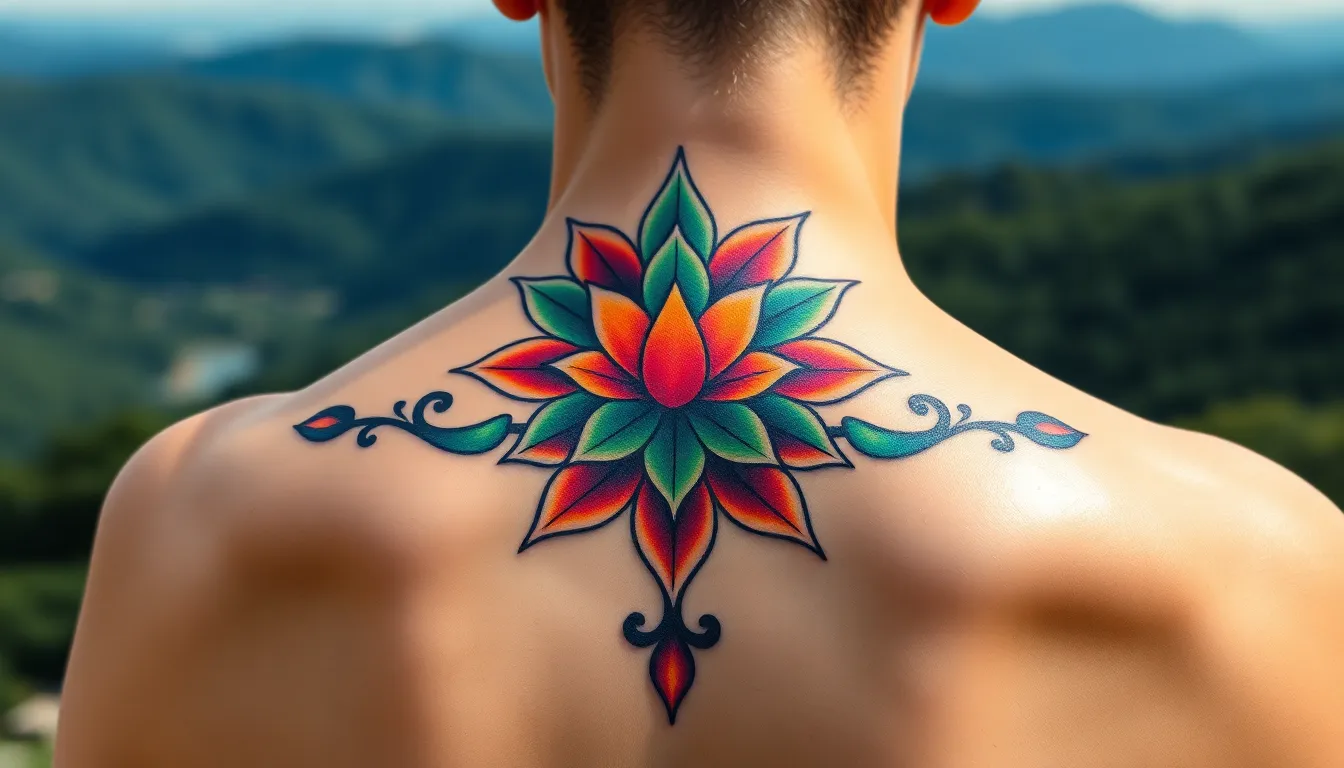
We find that spiritual energy tattoos offer some of the most meaningful Indian-inspired designs available. These sacred symbols connect ancient wisdom with modern body art to create powerful representations of inner balance and enlightenment.
Seven Chakra Symbols
Root Chakra (Muladhara) forms the foundation of our spiritual energy system. We see this chakra depicted as a red lotus flower with four petals, representing stability and grounding in tattoo designs. Artists often place these tattoos at the base of the spine or on the lower back to honor its symbolic position.
Sacral Chakra (Svadhisthana) embodies creativity and passion through its orange lotus design. We notice tattoo enthusiasts choosing this six-petaled symbol for hip placements or lower abdomen areas. The vibrant orange coloring makes these tattoos particularly striking against various skin tones.
Solar Plexus Chakra (Manipura) represents personal power through its yellow ten-petaled lotus. We recommend this design for those seeking to express confidence and self-esteem. Placement options include the upper abdomen or chest area to reflect its energetic location.
Heart Chakra (Anahata) captures love and compassion in its green twelve-petaled lotus form. We find this chakra symbol particularly popular for chest tattoos over the heart. The green coloring symbolizes healing and emotional balance in these designs.
Throat Chakra (Vishuddha) communicates truth through its blue sixteen-petaled lotus representation. We see these tattoos frequently placed on the neck or upper chest area. The blue tones create beautiful contrast in both color and black-and-gray tattoo styles.
Third Eye Chakra (Ajna) opens intuition through purple lotus or eye symbols. We observe these designs commonly featured on foreheads in traditional placement or adapted for chest and back locations. The mystical purple coloring adds depth to these spiritual tattoos.
Crown Chakra (Sahasrara) connects us to enlightenment through its violet thousand-petaled lotus design. We recommend placement at the top of the head or upper back to honor its spiritual significance. Artists often incorporate radiating energy patterns to enhance the crown chakra’s divine connection.
Third Eye Designs
Minimalist approaches work exceptionally well for Third Eye tattoos on the forehead or chest. We’ve seen these simple eye designs create powerful statements about heightened awareness and spiritual awakening. Clean lines and basic shading make these tattoos accessible to first-time spiritual ink enthusiasts.
Neo-traditional styles incorporate vibrant colors and intricate details to bring Third Eye designs to life. We notice artists combining traditional eye imagery with contemporary techniques like bold outlines and saturated color palettes. These designs often feature surrounding elements like lotus petals or geometric patterns.
Dotwork techniques create unique textures and patterns that enhance Third Eye symbolism. We recommend this style for those seeking detailed spiritual tattoos with meditative qualities. The repetitive dot patterns mirror traditional meditation practices while creating visually stunning body art.
Geometric interpretations blend sacred geometry with Third Eye imagery for modern spiritual expression. We see triangular frames, mandala surroundings, and mathematical patterns incorporated into these designs. The precision required for geometric work reflects the focus needed for spiritual development.
Kundalini Serpent Imagery
Coiled serpent designs represent dormant spiritual energy at the spine’s base waiting for awakening. We find these tattoos particularly meaningful for those beginning their spiritual journey. Artists often depict the snake in a circular coil with intricate scale details and symbolic elements.
Rising serpent tattoos show the Kundalini energy ascending through the chakras toward enlightenment. We recommend spine placements for these dramatic designs that can incorporate all seven chakra symbols. The upward movement creates ever-changing visual flow in these groundbreaking tattoos.
Chakra integration combines serpent imagery with energy center symbols for comprehensive spiritual tattoos. We see artists creating full back pieces that show the snake’s journey through each chakra level. Color gradients often represent the different chakra energies as the serpent rises.
Transformation symbolism makes Kundalini serpent tattoos perfect for marking personal growth periods. We notice these designs appeal to individuals who’ve experienced important spiritual awakenings or life changes. The serpent’s shedding skin metaphor adds powerful meaning to these already symbolic tattoos.
Indian Architecture Tattoo Ideas
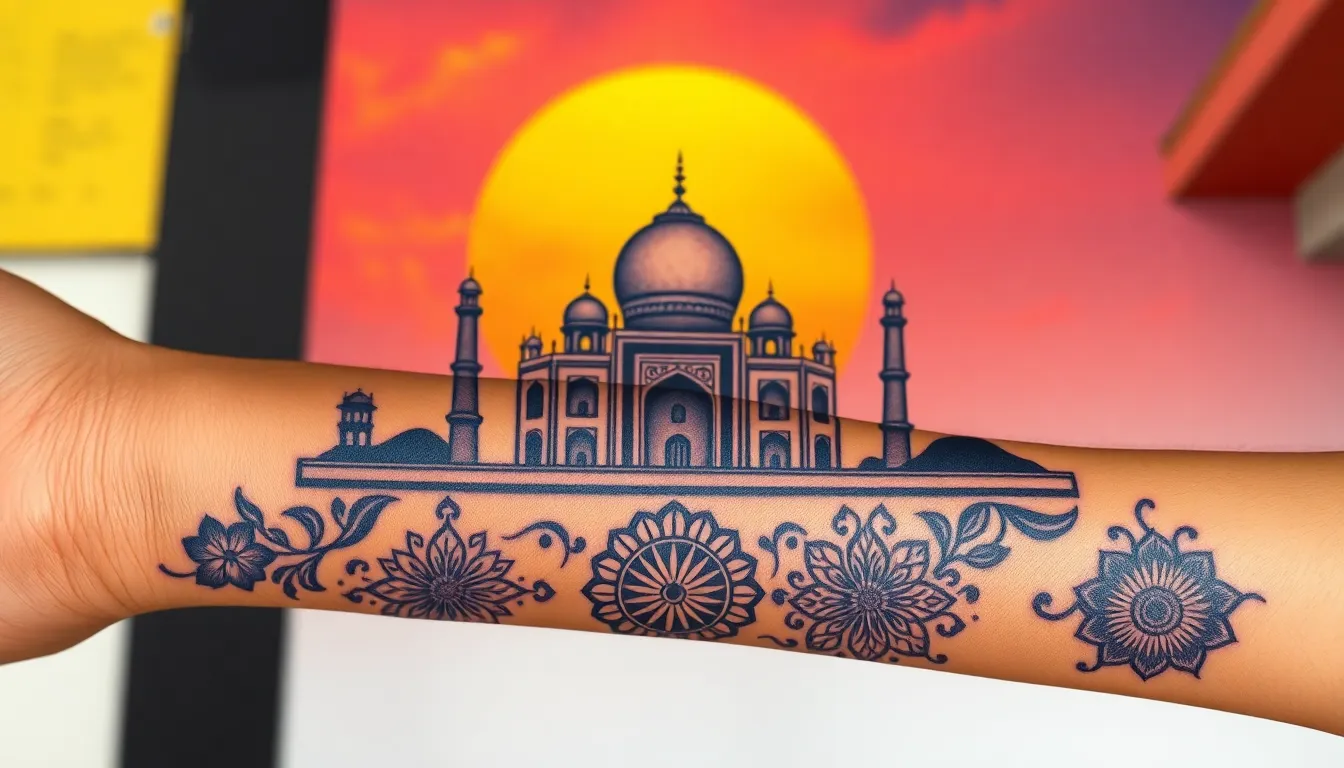
India’s architectural marvels offer breathtaking inspiration for tattoo designs that capture centuries of artistic mastery. These timeless structures translate beautifully into body art that celebrates our rich cultural heritage.
Taj Mahal Silhouettes
Taj Mahal tattoos showcase the monument’s iconic dome and minarets in stunning silhouette form. Artists often frame these designs against sunset backdrops that create dramatic contrast and emotional depth. Moonlit versions capture the Taj’s ethereal beauty while emphasizing its romantic symbolism as a testament to eternal love.
Placement options for Taj Mahal silhouettes work exceptionally well on forearms and shoulder blades. The monument’s symmetrical architecture adapts perfectly to these body contours. Smaller versions fit beautifully behind the ear or on the wrist for subtle elegance.
Color variations range from classic black ink to vibrant sunset palettes. Traditional approaches use solid black silhouettes that emphasize the structure’s distinctive outline. Contemporary artists incorporate orange, pink, and purple hues that mirror the monument’s changing appearance throughout the day.
Temple and Palace Designs
Temple carvings translate into intricate tattoo masterpieces that celebrate India’s spiritual architecture. These designs feature detailed sculptures of deities, mythological creatures, and elaborate floral patterns found on ancient temple walls. Palace motifs incorporate ornate pillars, arched windows, and decorative elements that showcase royal craftsmanship.
Artists often focus on exact architectural elements rather than entire structures. Carved doorframes, ornamental brackets, and decorative friezes become stunning standalone tattoos. These elements work particularly well as sleeve components or back pieces where intricate details can be fully appreciated.
Popular temple subjects include Khajuraho sculptures and South Indian Dravidian architecture. Khajuraho designs feature flowing figures and celestial beings carved in stone. Dravidian elements showcase towering gopurams with their pyramid-like structures and detailed deity sculptures.
Intricate Doorway Patterns
Indian doorway tattoos symbolize transitions and new beginnings through elaborate carved motifs. These designs incorporate traditional elements like lotus flowers, peacocks, and geometric patterns that adorn temple and palace entrances. Each pattern carries spiritual significance while creating visually stunning body art.
Doorway arch designs work beautifully as chest pieces or back tattoos. The natural curve of archways complements body contours while providing ample space for intricate details. Smaller doorway elements adapt well to forearm placements or as thigh pieces.
Traditional motifs include stepped patterns, floral vines, and guardian figures. Stepped geometric designs create bold visual impact through repetitive patterns. Floral vines add organic flow while guardian figures provide protective symbolism for the wearer.
Color schemes range from traditional stone gray to vibrant jewel tones. Monochromatic approaches emphasize architectural details through shading and line work. Colorful versions incorporate the rich blues, reds, and golds traditionally used in Indian architectural decoration.
Cultural Festival Tattoo Themes
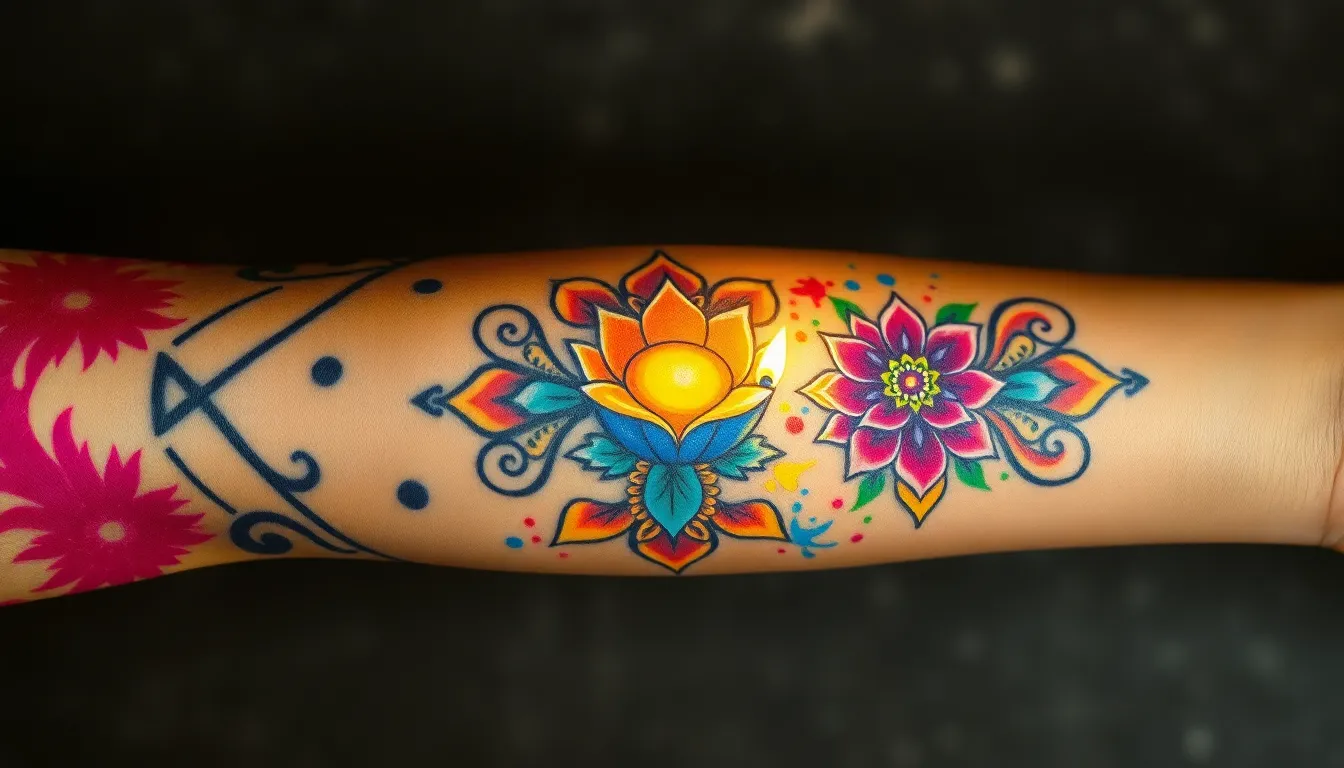
India’s vibrant festival celebrations offer incredible inspiration for meaningful tattoo designs. These festival themed tattoos capture the essence of cultural traditions while creating stunning body art that resonates with spiritual significance.
Diwali Light Celebrations
Diwali tattoos illuminate the skin with symbols of prosperity and enlightenment. Diyas (oil lamps) serve as the most popular design elements, often rendered in minimalist single-line drawings that work beautifully on wrists or fingers. Lotus flowers complement these lamp designs, representing purity and spiritual awakening during the festival of lights.
Fireworks motifs add ever-changing energy to larger Diwali pieces, typically placed on shoulder blades or arms where the explosive patterns can fully develop. Rangoli-inspired patterns frequently enhance these designs, creating intricate backgrounds that celebrate the decorative traditions of the festival. Swastika symbols appear in many Diwali tattoos, representing good fortune and prosperity in their traditional Hindu context.
Modern interpretations often combine multiple Diwali elements into cohesive sleeve designs. Artists frequently incorporate Lakshmi symbols like coins and elephants to emphasize themes of wealth and abundance. Placement options range from delicate finger tattoos featuring single diyas to elaborate back pieces showcasing complete festival scenes.
Holi Color Splashes
Holi tattoos burst with the joyful energy of India’s most colorful celebration. Rainbow hues flow across the skin in watercolor techniques that mimic the festival’s famous colored powders. These vibrant designs capture the playful spirit of Holi through abstract color bursts and splashes.
Flower motifs often anchor these colorful compositions, with marigolds and jasmine serving as popular choices. Contemporary artists blend traditional Holi imagery with modern tattoo techniques, creating pieces that seem to dance with movement and celebration. Color gradients flow seamlessly from one hue to another, representing the unity and joy that defines this spring festival.
Placement strategies favor areas where color can spread naturally, such as shoulders, thighs, or ribcages. Artists recommend considering how the colors will age over time, often suggesting bold outlines to maintain the design’s integrity. Handprint patterns sometimes appear in these tattoos, referencing the tradition of applying colors by hand during celebrations.
Rangoli Pattern Designs
Rangoli tattoos transform traditional floor art into permanent body decorations. Geometric patterns form the foundation of these intricate designs, featuring symmetrical shapes that represent cosmic harmony and balance. These mathematical compositions create mesmerizing visual effects when translated to skin.
Floral elements weave through the geometric framework, with lotus petals, paisley shapes, and vine patterns adding organic beauty. Artists often scale these designs to fit exact body areas, from small ankle pieces featuring simple patterns to large back tattoos showcasing elaborate rangoli compositions. Sacred symbols like Om or Ganesha frequently appear as central focal points within the geometric framework.
Intricate line work defines the quality of rangoli tattoos, requiring skilled artists who understand the precision needed for these detailed patterns. Mandala influences often blend with traditional rangoli motifs, creating hybrid designs that honor both traditions. Placement considerations include areas where the geometric patterns can maintain their symmetry and visual impact over time.
Color applications in rangoli tattoos range from traditional black line work to vibrant interpretations using festival colors. Dotwork techniques enhance the traditional aesthetic, as dots play a crucial role in authentic rangoli designs. These patterns work exceptionally well as connecting elements in larger Indian themed tattoo collections.
Modern Fusion Indian Tattoo Styles
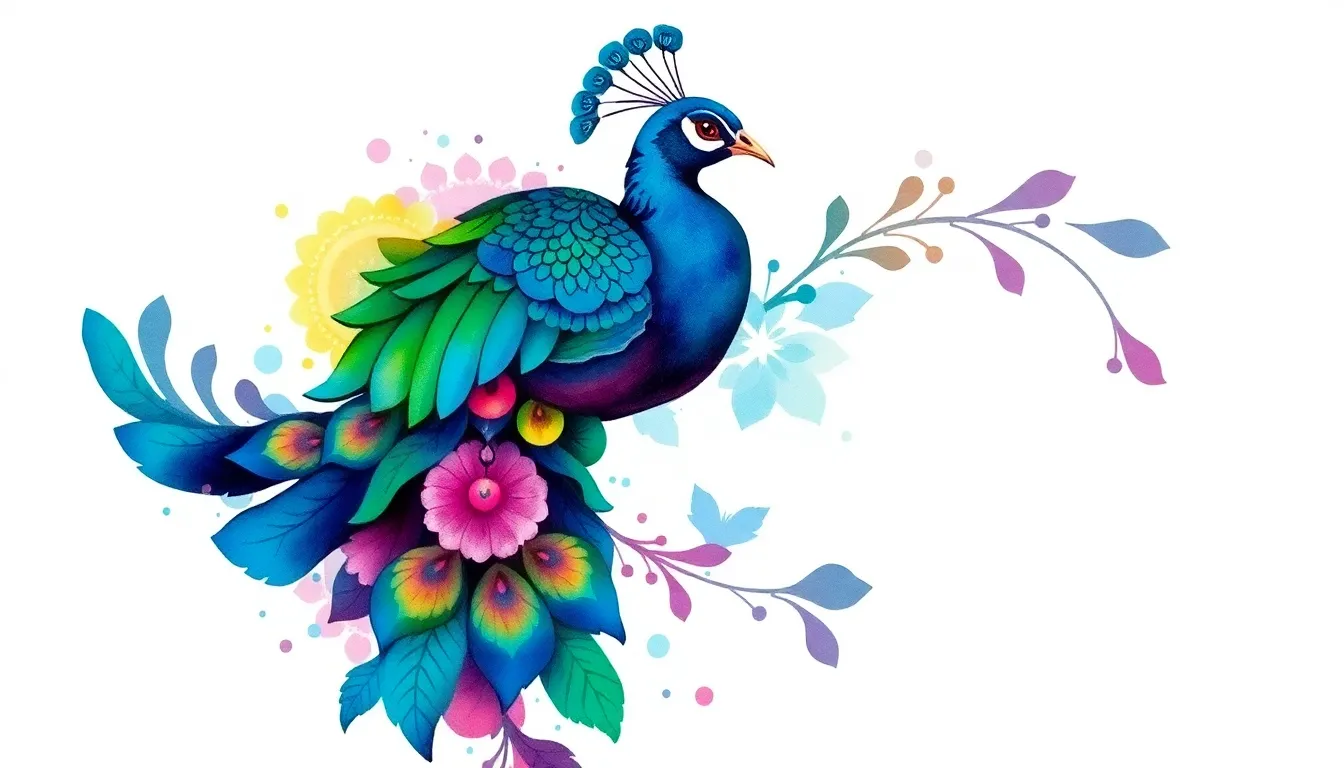
Today’s tattoo artists brilliantly merge ancient Indian traditions with cutting-edge techniques to create stunning contemporary body art. We’re witnessing an exciting evolution where traditional motifs receive modern interpretations that appeal to global audiences while preserving their cultural essence.
Contemporary Mandala Variations
Contemporary mandala tattoos transform the classic Indian spiritual circle into ever-changing, modern masterpieces. We see artists updating traditional mandalas with innovative color palettes, sophisticated shading techniques, and bold outlines that create striking visual impact. Dotwork becomes a signature element in these designs, creating texture and depth through precise stippling methods.
Modern mandala variations incorporate negative space strategically, allowing the skin to become part of the design itself. We find artists experimenting with 3D effects that make these sacred circles appear to float above the skin’s surface. Some talented tattooists mimic traditional woodblock printing precision by hand-carving stencils for detailed, symmetrical patterns that honor historical techniques.
Artists like Mo Naga have pioneered “neo-Naga” approaches that reinterpret tribal mandala elements for contemporary audiences. We observe how these modern interpretations integrate abstract shapes seamlessly with portraits and other imagery, creating fresh looks that maintain spiritual significance.
Minimalist Indian Symbols
Minimalist Indian tattoo designs focus on elegant simplicity, distilling powerful cultural symbols into clean, understated art. We appreciate how these tattoos use refined line work to represent the lotus, Om symbol, hamsa hand, and geometric patterns without overwhelming detail. Black ink dominates this style, creating timeless pieces that emphasize form over decoration.
Subtle shading techniques add depth to minimalist designs without compromising their clean aesthetic. We see these tattoos placed delicately on wrists, behind ears, or along the spine, making them perfect for first-time tattoo recipients. Personal meaning drives the popularity of minimalist Indian symbols, as they offer cultural tribute through understated beauty.
Small, precise placements allow multiple minimalist symbols to work together harmoniously across different body areas. We notice how these designs maintain their impact through careful attention to proportion and spacing rather than intricate detailing.
Watercolor Indian Motifs
Watercolor Indian tattoos bring traditional motifs to life through soft, flowing colors and brushstroke effects that mimic painted artwork. We’re captivated by how artists render elephants, peacocks, mandalas, and floral arrangements using vibrant, transparent hues that seem to dance across the skin. Blurred edges and blended colors create the signature painted-on-skin appearance that defines this style.
Movement becomes central to watercolor Indian motifs, with colors appearing to flow naturally into one another. We observe how artists emphasize the organic nature of traditional Indian art through these fluid color techniques. Peacocks receive particularly stunning treatment in watercolor style, with their feathers rendered in brilliant blues, greens, and purples that capture their natural iridescence.
Contemporary tattooists combine ancient Indian practices with watercolor aesthetics to create unique, personalized body art that feels both traditional and thoroughly modern. We see how this fusion allows for creative interpretation while maintaining respect for cultural significance.
Conclusion
Indian tattoo designs offer an extraordinary fusion of spiritual depth and artistic beauty that resonates with people worldwide. From ancient Sanskrit mantras to vibrant festival celebrations these tattoos carry profound meanings that extend far beyond their visual appeal.
Whether you’re drawn to the protective energy of Ganesha the groundbreaking power of chakra symbols or the elegant simplicity of minimalist Om designs there’s an Indian-inspired tattoo that can perfectly express your personal journey. The versatility of these designs means they adapt beautifully to any placement or size preference.
We encourage you to work with experienced tattoo artists who understand the cultural significance behind these sacred symbols. This ensures your chosen design maintains its authentic meaning while becoming a meaningful part of your personal story.
Frequently Asked Questions
What are some popular Indian-inspired tattoo symbols and their meanings?
Popular Indian-inspired tattoo symbols include the Om symbol representing universal creation, lotus flowers symbolizing purity and transformation, and mandalas representing wholeness and cosmic energy. Sanskrit text tattoos featuring mantras like Gayatri Mantra for spiritual growth are also highly sought after. These symbols carry deep spiritual significance while creating visually stunning body art.
How do Hindu mythology tattoos represent spiritual concepts?
Hindu mythology tattoos embody divine wisdom and protection through deities like Ganesha (remover of obstacles), Shiva (cosmic transformation), and Shakti goddesses (divine feminine energy). These designs often incorporate sacred elements like lotus flowers and Om symbols, creating meaningful artwork that connects the wearer to ancient spiritual traditions and divine energies.
What makes henna-inspired tattoo patterns culturally significant?
Henna-inspired tattoo patterns draw from traditional Mehndi designs featuring intricate floral elements, geometric shapes, and bridal motifs. These patterns celebrate special occasions like weddings and represent good fortune and happiness. Contemporary tattoo artists adapt these timeless designs for permanent body art, preserving cultural heritage while creating elegant, meaningful tattoos.
How do chakra tattoos represent spiritual balance?
Chakra tattoos represent inner balance through the seven energy centers, from the grounding Root Chakra to the enlightening Crown Chakra. Each chakra has unique symbols and colors reflecting specific spiritual aspects. Third Eye designs enhance spiritual awareness, while Kundalini serpent imagery symbolizes dormant spiritual energy and personal transformation through the chakra system.
What architectural elements inspire Indian tattoo designs?
Indian architectural tattoos draw inspiration from iconic structures like the Taj Mahal, temple carvings, and palace doorways. These designs feature intricate details of deities, mythological creatures, and geometric patterns that celebrate India’s artistic mastery. Doorway patterns symbolize transitions and new beginnings, while temple motifs connect wearers to sacred spaces and cultural heritage.
How do festival-themed tattoos capture Indian cultural celebrations?
Festival-themed tattoos capture vibrant Indian celebrations through symbols like Diwali diyas and lotus flowers for prosperity, colorful Holi designs using watercolor techniques, and Rangoli patterns transformed into permanent body art. These tattoos reflect the spiritual significance and rich cultural tapestry of Indian festivals, creating meaningful connections to traditional celebrations.
What are modern fusion Indian tattoo styles?
Modern fusion Indian tattoo styles blend ancient traditions with contemporary techniques, creating innovative body art. Contemporary mandala variations feature bold outlines and 3D effects, minimalist Indian symbols focus on elegant simplicity, and watercolor Indian motifs use vibrant colors and fluid techniques to bring traditional designs to life with modern expression.
